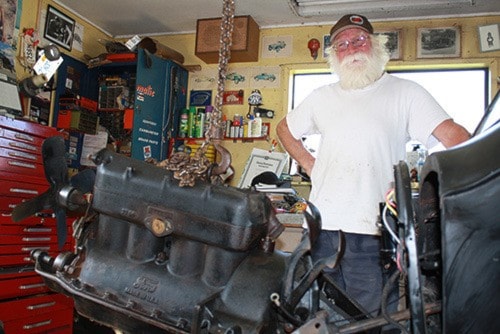Car shows are becoming an integral part of B.C.’s summer culture. Not a week goes by in the summer wwhere there isn’t a showing of vintage and custom vehicles somewhere in the province.
Locally, Kars Under the “K” began hosting a car show on the August long weekend 12 years ago. It continues to draw large crowds of both viewers and participants - the venue now handles more than 150 vehicles each year, forcing organizers to use Veterans Avenue and Fourth Street as display areas after filling up Memorial Park.
Although B.C. doesn’t have an official vintage car museum, there is a fellow by the name of Jim Ratsoy who is well known for the two warehouses on his Richmond farm that Canada’s largest display of vintage cars. Ratsoy is a a former dealer who has 130 well preserved antique vehicles. Tours can be had, by appointment, at a cost of $10 per person.
The Similkameen has their own answer to Ratsoy in car collector Ken Helm. Situated on a sprawling acreage on the upper bench in Cawston, Helm, along with wife Corinne have a fascinating collection of vintage and oddball vehicles.
Probably more fascinating is the story behind each one.
Take, for example, Helm’ most recent purchase - a 1923 Ford Model T, which he hopes to display at this Sunday’s Kars Under the “K” show in Keremeos.
“ I found it last fall on E-bay,” Helm related, “it was owned by a guy who lived near Sacramento, California - and he wasn’t even a car enthusiast.”
It turned out that the Model T owner was a Canadian teaching animation software at University of California Davis.
“It kind of ‘tweaked’ me - this philisophical thing, you know, in early Disney cartoons, this was the car you’d see,” he said, “At any rate, I won the bid.”
Helm drove down to pick up the car. The animation software expert told him he was located in a gated community - so Helm was quite surprised to find himself at the gates of a 100 acre gated community divided into five acre estates.
“The car was licensed and on the road,” Helm explained. He took the car back to the Simikameen, taking it for a joy ride last weekend.
“We were cruising up the Ashnola,” he said, “when I started seeing pieces of the tranny flying out of it.”
He got the ancient auto home, and took the engine and transmission out. The problem turned out to be a part of the ignition system, which Helm hopes to have repaired in time for the show.
“It’s bizarre technology compared to what we are used to today,” Helm explained, pointing to three pedals on the floor below the driver’s seat.
“One is the brake, the other is reverse gear, and the third one is low gear,” added, “so in order to drive this car, you had to push the pedal in, not release it.” Drivers used a combination of pedal movement and parking brake position to brake the car or keep it in motion.
Extremely basic, simple (there is no driver’s door, for example) and durable, the Model T sold 15 million units, once making up half of all cars made in the world.
“The Volkwagon Beetle has since superceded that number,” Helm believes The company continues to manufacture the original Beetle in Brazil.
Originally priced at $360 the Model T had a 176 cubic inch four cylinder engine that developed 20 horsepower.
“My garden tractor has a 26 horsepower engine, and is probably not much bigger than 30 cubic inches,” he said by way of modern comparison.
The Model T cruised at 30 miles per hour. With a gravity fed fuel tank, drivers sometimes had to climb hills in reverse in order to prevent the engine from running out of gas.
